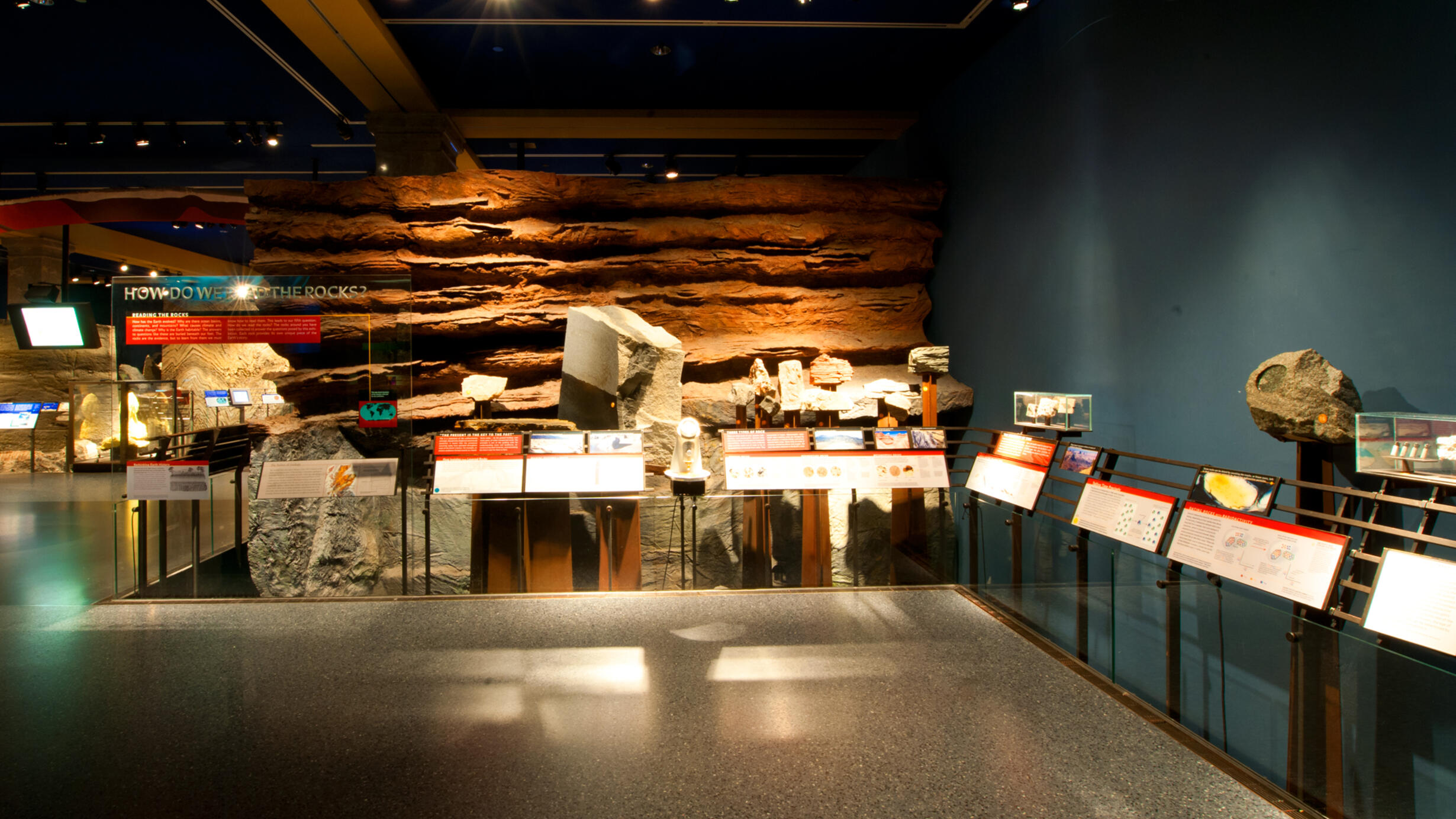How Do We Read the Rocks?
Part of Hall of Planet Earth.
 The "How do we Read the Rocks?" section of the Gottesman Hall of Planet Earth
The "How do we Read the Rocks?" section of the Gottesman Hall of Planet EarthAMNH / R. Mickens
How has the Earth evolved? Why are there ocean basins, continents, and mountains? What causes climate and climate change? Why is the Earth habitable? The answers to questions like these are buried beneath our feet. The rocks are the evidence, but to learn from them we must know how to read them. This leads to our fifth question: How do we read the rocks? The rocks around you have been collected to answer the questions posed by this exhibition. Each rock provides its own unique piece of the Earth’s story.
In This Section
Exhibit
Rethinking Earth History
Until the end of the 18th century, scientists believed that the Earth was no more than a few thousand years old.
Exhibit
The Present Is the Key to the Past
This is a statement of the uniformitarian principle.
Exhibit
The Father of Geology
Scottish naturalist James Hutton (1726-1797) attempted to formulate geological principles based on observations of rocks.
Exhibit
Three Types of Rock
Learn how rocks result from magma or lava, form into layers over time, or are transformed by environmental factors.
Exhibit
Dating Rocks
In order to understand geological processes, we need to envision time periods far greater than the hourly, daily, and yearly progression...
Exhibit
Deciphering the Grand Canyon
For geologists, the Grand Canyon is one of the most spectacular natural laboratories on our planet.